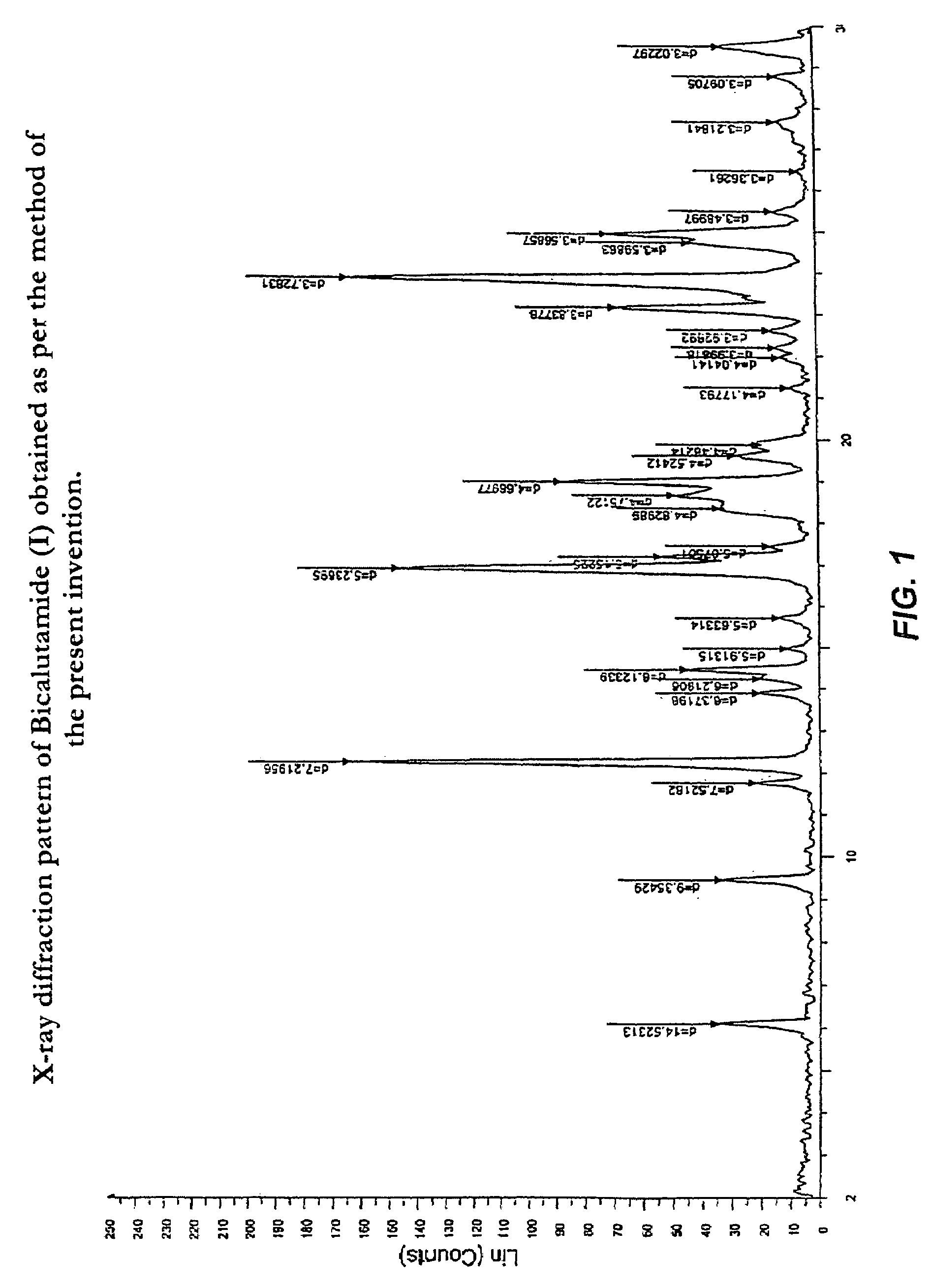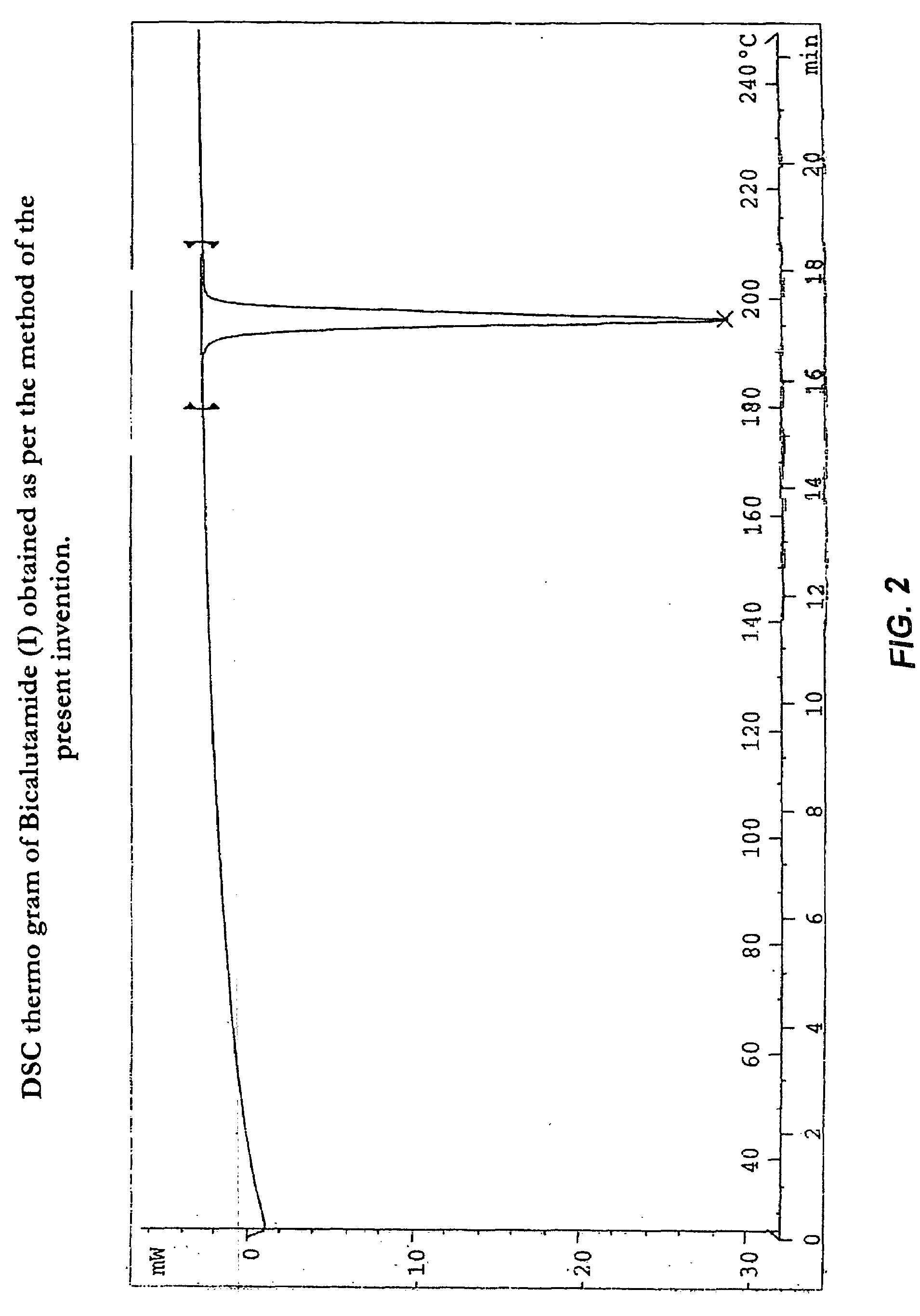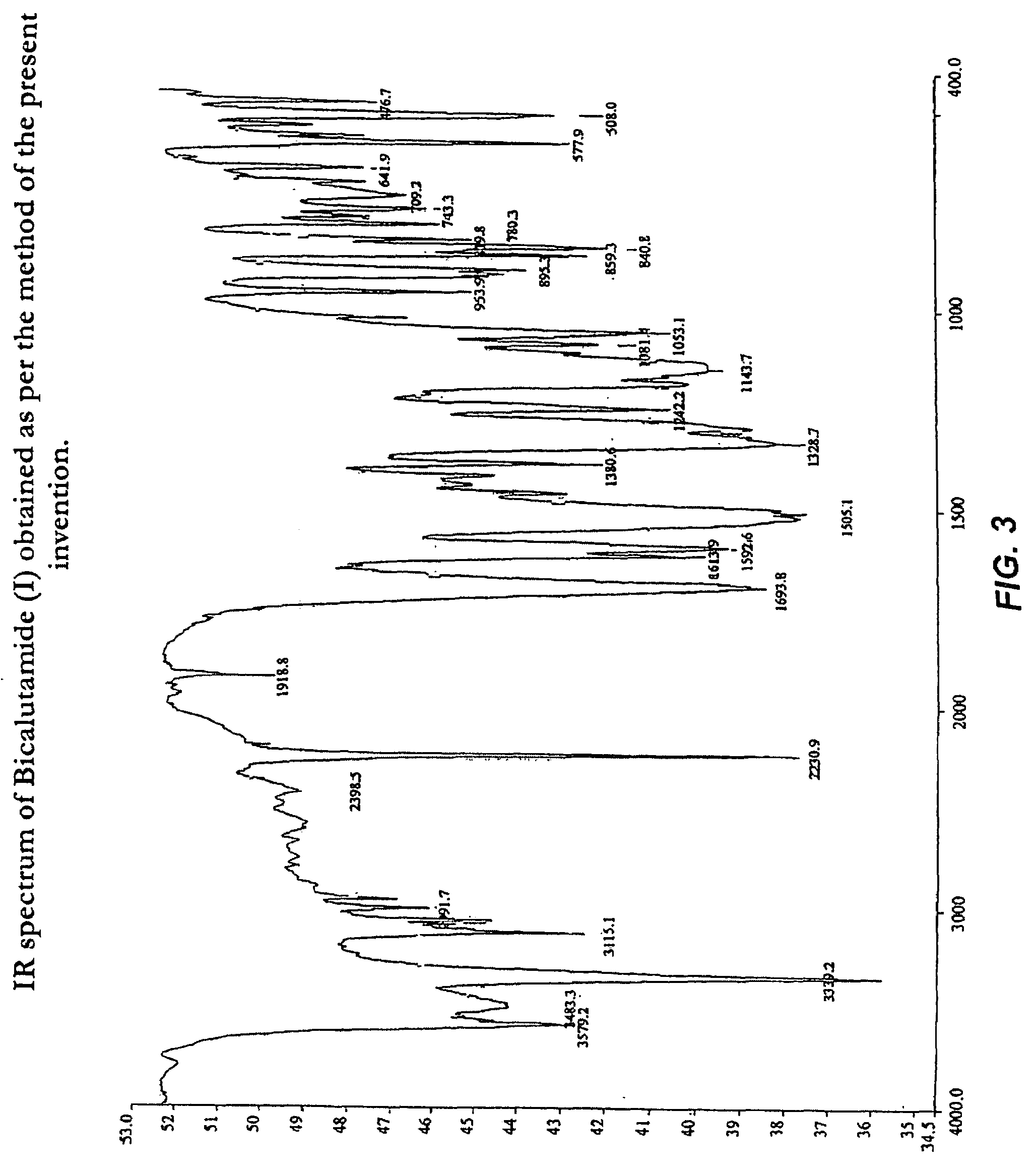Process for preparation of bicalutamide
a technology of bicalutamide and bicalutamide, which is applied in the field of improving the process of bicalutamide preparation, to achieve the effect of avoiding the use of peroxy acids
- Summary
- Abstract
- Description
- Claims
- Application Information
AI Technical Summary
Benefits of technology
Problems solved by technology
Method used
Image
Examples
example 1
[0078]To a mixture of acetonitrile (150 ml) and water (100 ml) was added N-[4-cyano-3-(trifluoromethyl) phenyl]-3-[(4-fluorophenyl) thio]-2-hydroxy-2-methyl propanamide [II, 10.0 gm, 0.025 mol] at 25-30° C. The temperature of reaction mixture was raised to 40-45° C. and to the solution was added potassium permanganate (7.94 gm, 0.050 mol, 2.0 eq) in lots over a period of 30 minutes maintaining the temperature between 40-45° C. during addition. The reaction mixture was agitated at 40-45° C. for further time till the completion of reaction. The reaction mixture was cooled to 25-35° C., and to which was added a solution of sodium bisulfite (12 gm) in water (600 ml). The reaction mixture was agitated at 25-35° C. for 6-7 hours and the solid precipitated was filtered and washed with water till the filtrate became colorless.
[0079]The solid was dried and dissolved in acetonitrile (50 ml) under heating. To the hot solution was added activated charcoal and the mixture heated to reflux for 1-...
example 2
[0080]To a mixture of acetonitrile (150 ml) and water (100 ml) was added N-[4-cyano-3-(trifluoromethyl) phenyl]-3-[(4-fluorophenyl) thio]-2-hydroxy-2-methyl propanamide [(II), 10.0 gm, 0.025 mol] at 25-30° C. The temperature of reaction mixture was raised to 40-45° C. and to the solution was added potassium permanganate (9.93 gm, 0.062 mol, 2.5 eq) in lots over a period of 30 minutes maintaining the temperature between 40-45° C. during addition. The reaction mixture was agitated at 40-45° C. for further time till the completion of reaction. The reaction mixture was cooled to 25-35° C. and to which was added a solution of sodium bisulfite (14 gm) in water (600 ml). The reaction mixture was agitated at 25-35° C. for 6-7 hours and the solid precipitated was filtered and washed with water till the filtrate becomes colorless.
[0081]The solid was dried and dissolved in acetonitrile (50 ml) under heating. To the hot solution was added activated charcoal and the mixture heated to reflux for ...
example 3
[0082]To a mixture of acetonitrile (900 ml) and water (600 ml) was added N-[4-cyano-3-(trifluoromethyl) phenyl]-3-[(4-fluorophenyl) thio]-2-hydroxy-2-methyl propanamide [(II), 60 gm, 0.15 mol] at 25-30° C. The temperature of reaction mixture was raised to 40-45° C. and to the solution was added potassium permanganate (72 gm, 0.45 mol, 3.0 eq) in lots over a period of 30 minutes maintaining the temperature between 40-45° C. during addition. The reaction mixture was agitated at 40-45° C. for further time till the completion of reaction. The reaction mixture was cooled to 25-35° C. and to which was added a solution of sodium bisulfite (100 gm) in water (3600 ml). The reaction mixture was agitated at 25-35° C. for 6-7 hours and the solid precipitated was filtered and washed with water till the filtrate becomes colorless.
[0083]The solid was dried and dissolved in acetonitrile (300 ml) under heating. To the hot solution was added activated charcoal and the mixture heated to reflux for 1-2...
PUM
| Property | Measurement | Unit |
|---|---|---|
| Temperature | aaaaa | aaaaa |
| Temperature | aaaaa | aaaaa |
| Ratio | aaaaa | aaaaa |
Abstract
Description
Claims
Application Information
 Login to View More
Login to View More - R&D
- Intellectual Property
- Life Sciences
- Materials
- Tech Scout
- Unparalleled Data Quality
- Higher Quality Content
- 60% Fewer Hallucinations
Browse by: Latest US Patents, China's latest patents, Technical Efficacy Thesaurus, Application Domain, Technology Topic, Popular Technical Reports.
© 2025 PatSnap. All rights reserved.Legal|Privacy policy|Modern Slavery Act Transparency Statement|Sitemap|About US| Contact US: help@patsnap.com



